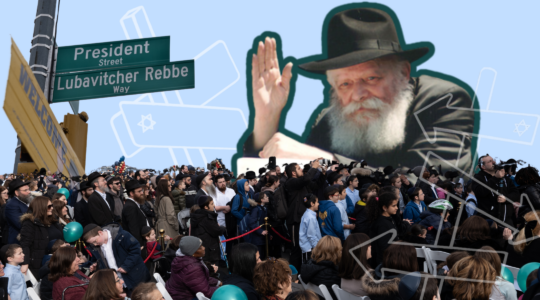Santiago, the blossoming capital of Chile, has long been the Latin American also-ran — overlooked as travelers flocked to the tango of Buenos Aires, the Inca wonders of Machu Picchu and the sexy shores of Brazil.
That’s precisely what makes Santiago such fun to discover. As one of the hemisphere’s most vibrant economies, crisis-defying Chile is becoming an international destination for investors, professionals and tourists, and one of my top picks for 2012.
Evidence of Santiago’s fortune is all over the capital, most noticeably in the building boom that’s transforming the skyline of this snowy-peaked city. The past few years have also witnessed a flurry of new institutions — from elegant synagogues built for a growing Jewish population to cultural centers, museums and memorials to the victims of 20th-century regimes.
To keep up with all this, Santiago’s world-class metro system is expanding. Its clean, shiny trains are the best way to get around the sprawling city.
“People definitely dress better than they did 10 years ago,” observed my friend Rachel, a longtime Santiago denizen, referring to the city’s shiny modern look. That look is epitomized by the bustling new Chabad center, modeled after the Eastern Parkway headquarters, and the grand Comunidad Israelita, inaugurated last year as South America’s largest synagogue.
Despite the rosy outlook, progress brings tensions — most notably the yearlong wave of student protests, at times violent, which left large swaths of Santiago scarred with graffiti.
But there’s also plenty of legitimate paint: during this Southern Hemisphere summer, Santiago’s major venues are celebrating the 100th birthday of its greatest art star. That would be the single-name painter known as Matta, who interpreted the 20th-century avant-garde currents through a distinctive Latin American filter.
Aside from Matta, a tour of the newest institutions reveals that Chilean culture, rather than fine art per se, is Santiago’s strength. Much of that culture was shaped by two phenomena — the brutal 20th-century dictatorship of Augusto Pinochet on one hand, and the country’s dramatic geography on the other. Wedged between the mighty Andes and the vast Pacific, Chileans cultivated a rugged, independent frontier spirit, blending indigenous Mapuche culture with a New World sense of possibility.
To best understand what’s inside the new museums, start your Santiago tour outdoors, where snow-capped mountains are part of daily life even in the central city.
Santiago’s two major “hills” — “Chileans call anything under 20,000 feet a hill,” noted Rachel — are Santa Lucía, walkable from downtown, and Cerro San Cristóbal, reached via cable car. Go on a clear day, as smog is a huge problem in Santiago.
San Cristóbal features a lush park at an altitude of nearly 3,000 feet (South American cities are not for the faint of lung), as well as one of Santiago’s trendiest neighborhoods of late — Bellavista, tucked into the mountainside. As the name suggests, Bellavista boasts stunning city views, and its colorful atmosphere and cutting-edge restaurants make for a lively nightlife.
Back downtown, perhaps the hippest district right now is Lastarria, where you’ll find the Museum of Fine Arts amid graceful boulevards of fin-de-siecle buildings.
Though not all locals are thrilled about its newfound hipness, Lastarria exemplifies the cosmopolitan currents coursing through modern Santiago. Alongside artisan boutiques featuring the Southern Cone’s hottest young designers are sex shops, gay couples linking arms and other sights unthinkable during the long Pinochet years.
Through March 4, the Museum of Fine Arts is the place to see “Matta 100,” the most prominent of Chile’s many commemorations of the painter’s centenary, with a comprehensive display of the surrealist’s aesthetic range from the museum collection.
The other worthwhile Matta event is over at the La Moneda Presidential Palace. A pastel edifice in the heart of downtown, the palace is one of the city’s better-known landmarks, but many visitors don’t realize that a major arts venue lies underneath. The Centro Cultural Palacio La Moneda opened a few years back to give Chileans a tangible stake in their national culture.
Through February, the Centro is hosting exhibitions highlighting two titans of modern Chilean identity. “Matta Centenary” is a combination retrospective-tribute to the painter, with major works alongside biographical artifacts and more recent artistic homages. “Violeta Parra renovada” offers a look at the visual art of Parra — a singer-songwriter, artist and ethnologist beloved for reviving and updating Chilean folklore for the 20th century.
A major cultural update on the downtown scene is the Centro Gabriela Mistral, which opened in 2010. Named for Chile’s second-most-revered poet (after Pablo Neruda), the gleaming building is a symbolic replacement for an aging foundation long associated with the dictatorship — and Santiago’s newest place to hear opera, see dance and tour galleries.
The Federation of Chilean Horse Breeders, of all things, was a major sponsor of the newly opened Museo de la Chilenidad — awkwardly translating as “Museum of Chileanness” — which offers a fun look at Chilean gaucho culture. The museum reopened last fall with an expansive exhibit, “Peasant, Man and Horse in Chile,” in the posh Las Condes district.
Las Condes is an increasingly Jewish area of town, home to the Estadio Israelita Maccabi Jewish sports complex and community center. Along with Bomba Israel, Santiago’s historic all-Jewish volunteer firehouse, Estadio Israelita is an example of how Chile’s Jews — Ashkenazim and Sephardim, Germans and Syrians — have integrated in this sporty, ethnically diverse society.
Santiago has had its share of ethnic tensions, of course. But tolerance increasingly reigns in the multicultural capital, where the sky’s the limit for proud new buildings, and the mountains leave you literally walking on clouds.
The New York Jewish Week brings you the stories behind the headlines, keeping you connected to Jewish life in New York. Help sustain the reporting you trust by donating today.




